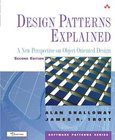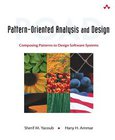Superstructure Design
Bridge Engineering Handbook
2nd Edition

Book Details:
| Publisher: | CRC Press |
| Series: | CRC Press , Handbook |
| Author: | Wai-Fah Chen |
| Edition: | 2 |
| ISBN-10: | 1439852219 |
| ISBN-13: | 9781439852217 |
| Pages: | 752 |
| Published: | Jan 24 2014 |
| Posted: | Dec 08 2014 |
| Language: | English |
| Book format: | |
| Book size: | 21.33 MB |
Book Description:
Over 140 experts, 14 countries, and 89 chapters are represented in the second edition of the Bridge Engineering Handbook. This extensive collection highlights bridge engineering specimens from around the world, contains detailed information on bridge engineering, and thoroughly explains the concepts and practical applications surrounding the subject. Published in five books: Fundamentals, Superstructure Design, Substructure Design, Seismic Design, and Construction and Maintenance, this new edition provides numerous worked-out examples that give readers step-by-step design procedures, includes contributions by leading experts from around the world in their respective areas of bridge engineering, contains 26 completely new chapters, and updates most other chapters. It offers design concepts, specifications, and practice, as well as the various types of bridges. The text includes over 2,500 tables, charts, illustrations, and photos. The book covers new, innovative and traditional methods and practices; explores rehabilitation, retrofit, and maintenance; and examines seismic design and building materials. The second book, Superstructure Design, contains 19 chapters, and covers information on how to design all types of bridges. Whats New in the Second Edition: Includes two new chapters: Extradosed Bridges and Stress Ribbon Pedestrian Bridges Updates the Prestressed Concrete Girder Bridges chapter and rewrites it as two chapters: Precast/Pretensioned Concrete Girder Bridges and Cast-In-Place Post-Tensioned Prestressed Concrete Girder Bridges Expands the chapter on Bridge Decks and Approach Slabs and divides it into two chapters: Concrete Decks and Approach Slabs Rewrites seven chapters: Segmental Concrete Bridges, Composite Steel I-Girder Bridges, Composite Steel Box Girder Bridges, Arch Bridges, Cable-Stayed Bridges, Orthotropic Steel Decks, and Railings This text is an ideal reference for practicing bridge engineers and consultants (design, construction, maintenance), and can also be used as a reference for students in bridge engineering courses.
Download Link:
Related Books:
Design Patterns Explained
A New Perspective on Object-Oriented Design
2nd Edition
"One of the great things about the book is the way the authors explain concepts very simply using analogies rather than programming examplesthis has been very inspiring for a product I'm working on: an audio-only introduction to OOP and software development." Bruce Eckel "...I would expect that readers with a basic understanding of object-oriented programming and design would find this book useful, before approaching design patterns completely. Design Patterns Explained complements the existing design patterns texts and may perform a very useful role, fitting between introductory texts such as UML Distilled and the more advanced patterns...
Modern C++ Design
Generic Programming and Design Patterns Applied
In Modern C++ Design, Andrei Alexandrescu opens new vistas for C++ programmers. Displaying extraordinary creativity and virtuosity, Alexandrescu offers a cutting-edge approach to software design that unites design patterns, generic programming, and C++, enabling programmers to achieve expressive, flexible, and highly reusable code. The book introduces the concept of generic components, reusable design templates that enable an easier and more seamless transition from design to application code, generate code that better expresses the original design intention, and support the reuse of design structures with minimal recoding. The author then shows how to apply this approach to recurring, real-world issues that C++ programmers face in their day-to-day a...
Pattern-Oriented Analysis and Design
Composing Patterns to Design Software Systems
Software experts agree: the most difficult aspect of building software is not coding; it is the decisions the designer makes in the early stages. Those decisions live with the system for the rest of its lifetime. Good designs beget good software. Bad designs beget trouble. Designers are faced with a tough question: how do they know whether their designs are good or bad? Design patterns can provide valid judgment criteria for software designers. While a great deal of effort has been devoted to discovering new design patterns, very little effort has been spent on developing a process for "gluing" or "composing" design patterns to better develop software applications. This book specifically addresses this need, and explains the Patte...
2007 - 2021 © eBooks-IT.org



